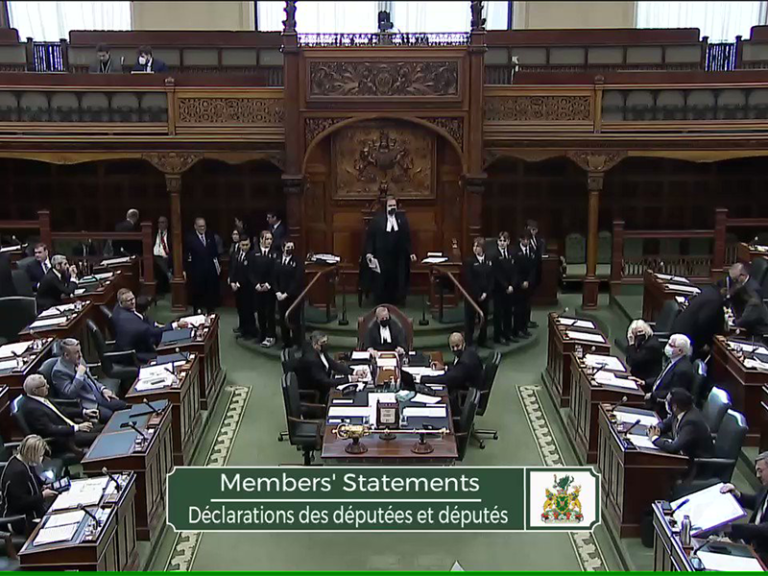By Deborah O’Connor
Since the Ontario government launched its poverty reduction plan nearly three years ago, service providers eagerly jumped on the band wagon, tripping over themselves forming local groups in this latest “must do” campaign to be considered progressive amongst their peers. Flush with the excitement of a new focus, committees, sub-committees, ad-hoc committees, and the accompanying flow charts were designed and many meetings held. Then, more meetings, at which it was determined that (a) they needed funding to do their work, and (b) more studies were required to find out who was poor, why they were poor, and how to alleviate their poverty.
Meanwhile the province back-tracked on their promises when the economy faltered. While they were still promising real action to reduce poverty, they were quietly dismantling and gutting many of the services the poor rely on. Locally, a quick look at the chaos in Legal Aid services can be seen at Family and Criminal Court every week and the staggering amount of food distributed by our local Food for All Warehouse and Fare Share food banks stands as a stinging testament to the results of annual one per cent increases to welfare rates while food costs soar.
Since almost all these local poverty reduction groups are dependent on funds from the province for their survival, not very many of them take the obvious step of calling on them to make concrete improvements to welfare rates and service levels in areas like mental health, literacy, and social services. But, even without these clearly needed measures, there are still improvements the local groups can make that will reduce poverty.
Aside from monetary issues, one of the hardest obstacles for the poor to overcome is their isolation. Following years of poor bashing by politicians and the mainstream media, people know being poor means being inferior, being dismissed as authors of their own misfortune and disregarded completely. While sports groups have their hockey arenas and soccer and baseball fields, and artsy types have their galleries and galas, the poor have nothing. If it wasn’t for the community meals and food bank distribution days, they would have no social outlets at all. Often, when they are forced to go to a social agency for services, they are made to wait endlessly, not listened to, then sent off somewhere else for more of the same.
Making changes within the social agencies is one of the most effective, and cheapest means to reduce poverty and the isolation it creates. It centres around one simple principle: that is to involve the users of the service in planning and providing the service, and in some cases, like the food banks, even delivering the service. Trouble is it’s not easy. Thanks to always being made to feel inferior, many of the people with the most to offer can be difficult to communicate with and it takes sensitivity and humour to bring out their best. Here’s a suggestion on how to start.
Include service users on the Boards of Directors of agencies and institutions. Not just one token person either, they should make up at least 20 percent of the board seats, if they are to have a real voice at the table. If they need a few dollars for childcare and transportation to get there, make a policy to allow it. Schedule meetings for their convenience, not the staff’s. Ensure they are heard and not drowned out by the accountants and lawyers who are so used to running the show. Take a good look at who is on the board and, if their words and actions betray contempt for the clientele, get rid of them.
If this one simple step were taken, changes would be made to service delivery. We’d likely see agencies opening later and staying open longer into the evening, maybe even Saturday service so the working poor can access services. Coffee might be available to the clients and not just for the staff. We might see staff dressed more casually instead of wearing expensive outfits chosen just to differentiate them from their clients. Perhaps an evaluation form for clients to complete immediately after receiving service, rating their experience and treatment by their helpers would be available. These may seem like inconsequential measures, but for those at the receiving end of services, they would mean a lot.
Carried out to maximum effect, including a significant number of service users on the boards of agencies whose purpose is to serve them will mean those agencies become responsive to the needs of their clients, providing the services they actually need in a way that they need them. It’s a concept taken for granted in business where it’s understood that the customer comes first, and that attention paid to their needs results in a successful business. It’s a lesson social service agencies should heed if they really care about the well being of their clients.


